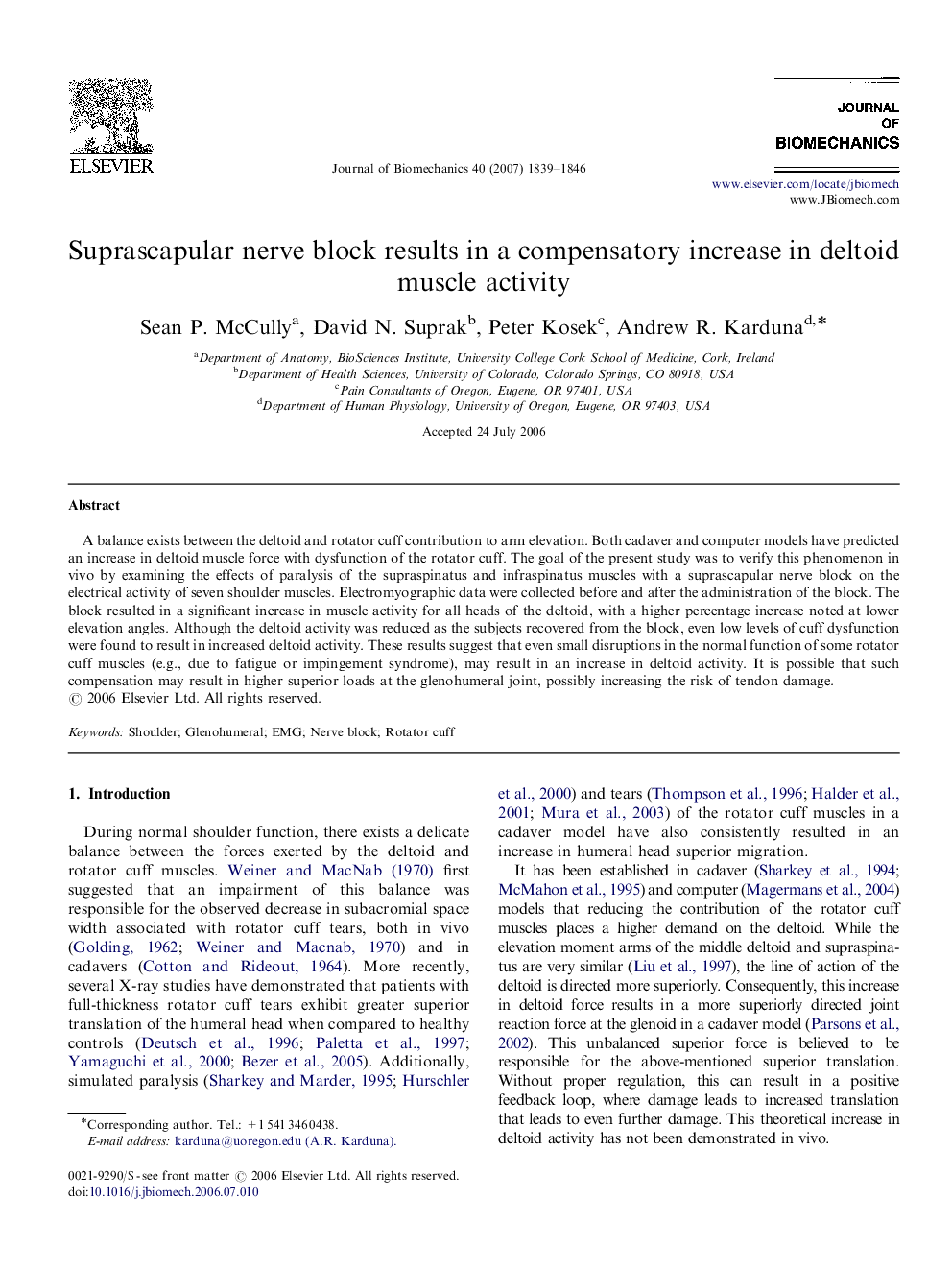| Article ID | Journal | Published Year | Pages | File Type |
|---|---|---|---|---|
| 874381 | Journal of Biomechanics | 2007 | 8 Pages |
A balance exists between the deltoid and rotator cuff contribution to arm elevation. Both cadaver and computer models have predicted an increase in deltoid muscle force with dysfunction of the rotator cuff. The goal of the present study was to verify this phenomenon in vivo by examining the effects of paralysis of the supraspinatus and infraspinatus muscles with a suprascapular nerve block on the electrical activity of seven shoulder muscles. Electromyographic data were collected before and after the administration of the block. The block resulted in a significant increase in muscle activity for all heads of the deltoid, with a higher percentage increase noted at lower elevation angles. Although the deltoid activity was reduced as the subjects recovered from the block, even low levels of cuff dysfunction were found to result in increased deltoid activity. These results suggest that even small disruptions in the normal function of some rotator cuff muscles (e.g., due to fatigue or impingement syndrome), may result in an increase in deltoid activity. It is possible that such compensation may result in higher superior loads at the glenohumeral joint, possibly increasing the risk of tendon damage.
